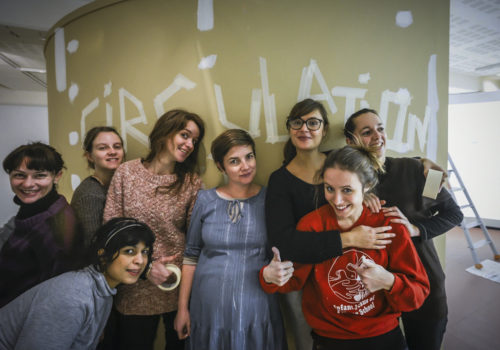An interview with Marion Hislen, president of Fetart, the association Circulation(s). Interviewed by Juliette Deschodt.
This is the third year of the festival. What major changes has it seen ?
M. Hislen : There haven’t been any major changes since last year’s festival, although we have tried to include more photography installations, to take photography off the walls and get it out into the exhibition space.
It seems like common themes this year are family and grief. How is the selection made ?
M.H : I think that we’re very in tune with certain trends not only with contemporary photography, but with the state of the world itself. We realized this after we made our first selection. This has been a sad, difficult year. We saw a lot of work about the search for roots and identity, and about death. Very few of the portfolios we reviewed were trivial or light-hearted.
We realized how difficult it is to be a young photographer today. After all, young people have the highest unemployment rates in Europe. Times are tough for them and you could feel that in the work, more than in previous years. Everything was tinged with a sense of wondering and nostalgia. The methods of presentation were also rather different this year: at least 40% of the works are installations mixing different formats and material.
You’ve chosen François Cheval to oversee the festival. Why him?
M.H : Because our association is mainly made up of women, and we have the reputation of being kind of girly, so this year we wanted to defy that reputation and choose a man! All kidding aside, we really wanted to work with him because, as a museum curator, he represents an institution. And among people who represent institution, he’s the best match for the festival.
How does the jury make its selection?
M.H : We received 850 portfolios this year, and of course they all arrived right on deadline. We were overwhelmed. It took us three weeks to go through them all! First the association makes a preselection of 150 portfolios for the final jury, which includes several big names from the world of photography as well as the festival’s partners.
The festival has come a long way in three years. How have its alumni fared?
M.H : The festival has proved to be a springboard for young photographers. For example, Gregor Beltzig is now represented by the Galerie Binôme. Amélie Chassary and Lucie Belarbi have been working non-stop since last year’s festival. Eric Pillot went on to win the Prix HSBC, and the success of Maia Flore needs no comment. In fact, this year’s winner, Patrick Willocq, has already been awarded another prize.
















